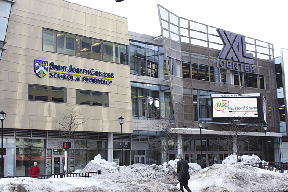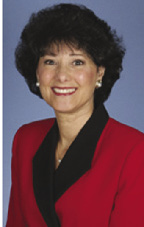As we began the New Year, I am feeling a psychological shift. I am seeing more prospective business activity, some more hiring and even those at the Golden Globes were wearing brighter colors!
Aggregating career websites are now showing the same number of job openings as in 2007 and Time reported that GE, Deloitte and engineering firms are in a hiring mode. College officials are also noticing some change with more business interviews being scheduled at career fairs and on campus than in 2010. Businesses were more profitable last year and we know money is waiting on the sidelines for investment. There is momentum building, yet, even with 2011 forecasts for healthy GDP growth, greater exports and the Hartford MSA's unemployment rate below the national average, there are still high vacancy rates. For communities, technology is the culprit, shrinking the need for commercial space but for business, technology is the enabler. Technology is facilitating the creation of a more versatile, distributed workforce with new requirements for smaller, reconfigured workplaces. In the Hartford region with its highly educated workforce, these mega effects of technology and globalization are palpable. We expect that the traditional office space will evolve into some new uses. So the big questions remain, "Where are the opportunities? Where are the new jobs?"
Recovery is favoring the college educated and where skills match demand. This region has had its eye on just that. The insurance and financial services sector has a formalized statewide industry cluster that not only focuses on ensuring that the business climate is competitive and favorable but that there will continue to be a ready pipeline of highly qualified workers. In 2009, High School Inc. opened its doors to prepare students for careers in the insurance industry. This past summer there was an Actuarial Boot Camp attended by some of the region's best and brightest students. Already a number of these high school students have passed their actuarial licensing exams and upon graduation will hit the ground running.
At my organization, the MetroHartford Alliance, demographic research revealed that the region has approximately 90,000 adults with some college credit and no degree. In 2010, Graduate!CT was launched to strengthen the workforce and boost employee earning potential by completing a college degree. Modeled after Graduate!Philadelphia, this program is the second one of its kind in the U.S. and as an early testament, Graduate!CT was recently awarded a $100,000 Lumina Grant. As John Shemo, executive director, frames it, "With New England's population growth being stable, our economic health relies on our capacity to educate our workforce. Graduate!CT is a centralized, person-centered approach that addresses the difficulties facing adult non-traditional students, offering them support, encouragement and results."
This type of high quality, demand driven education is consistent throughout the region. In the health care sector, several area colleges have worked to eliminate the nursing shortage. Goodwin College's Histologic Science Certificate Program is the only one offered in Connecticut. 100% of these students have passed the licensing exam and enjoy a 100% placement rate. Last year Goodwin students had the highest average score on the histology licensure exam out of the 28 programs in the U.S.
In the fast growing area of biomedical engineering, not all research involves wet lab space. However locating around hubs of medical activity allows for the work to occur in a company's own space or if necessary, accessing a wet lab in a local hospital. Donald Peterson, PhD, director biomedical engineering program at the University of Connecticut, believes "Hartford has the potential to become a healthcare city, providing the unique opportunity for growth in what I call 'the translational triad' among academia, industry and clinical environments."
In Hartford, a city of only 18 square miles with nine of them being park, another school of higher education will open its doors this fall. St. Joseph College will officially welcome its first class to its School of Pharmacy joining UConn's Business School and Law School, Trinity College, University of Hartford, Rensselaer Polytechnic Institute and Capital Community College. The city is also home to major teaching hospitals such as Connecticut Children's Medical Center, Hartford Hospital, and St. Francis Hospital and Medical Center.
So to answer the questions, "Where are the opportunities? Where are the new jobs?" In summary: Whether the employment effects of the great recession are structural or cyclical; and where healthcare and educational services are the fastest growing sectors in this region and the country; and where talent and technology infrastructure are essential, we stand ready. We stand ready not only at the nexus of major highways or where the commercial real estate structure may offer a lower cost alternative but at the nexus of talent, technology and transformation. The opportunities are here and we look forward to answering the second question together!
Sandra Johnson, EDP, is vice president and director of business development for the MetroHartford Alliance.












